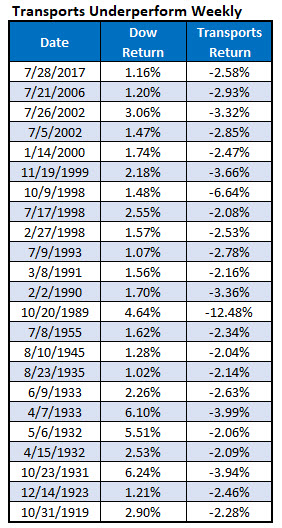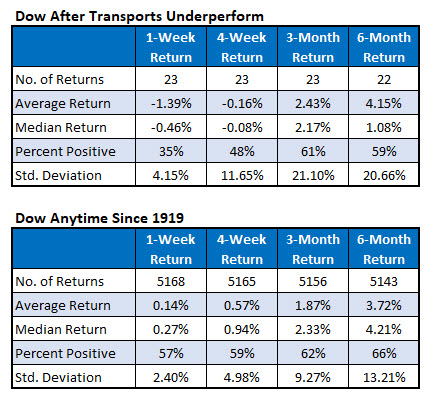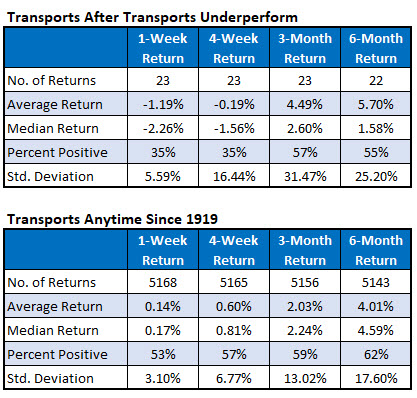Bad Week for Transport Stocks Could Have Big Implications
Transport stocks have taken a hit this week, following some lackluster airline earnings. As such, the Dow Jones Transportation Average (DJT) is pacing for a weekly loss of more than 2%. Considering the Dow Jones Industrial Average (DJI) is headed for a weekly win, some Dow Theory followers could be getting nervous at the divergence. Below, we take a look at how the transports and blue-chip indexes perform after going different directions.
Just the Second Transports Signal Since 2006
The last time the DJT was down more than 2% for the week at the same time the DJI was up at least 1% was in late July 2017. Prior to that, you'd have to go back to July 2006 for a signal. In fact, it's interesting to note that the last four signals occurred in the month of July. The year with the most signals was 1998 -- during the height of the dot-com boom -- with three. Since 1919, there have been just 23 such signals of DJT/DJI divergence, according to data from Schaeffer's Senior Quantitative Analyst Rocky White.

Short-Term Underperformance, Volatility Ahead?
Looking at Transports and Dow returns after signalsshows that both sides tend to underperform in the short term, and volatility is higher than usual across the board, as evidenced by the Standard Deviation columns in the charts below. One week after a signal, the DJI was down 1.39%, on average, and the DJT was down 1.19%. Both indexes were positive just 35% of the time. That's compared to average anytime one-week gains of 0.14%, with respective win rates of 57% and 53%.
A month after signals, the DJI and DJT were both down close to 0.2%, on average, compared to average anytime four-week gains of about 0.6%. The DJI was higher 48% of the time, and the DJT was higher 35% of the time -- underperforming their average anytime win rates of 59% and 57%, respectively.
However, it's worth noting that both the DJI and DJT tend to outperform looking three and six months after signals. Specifically, the blue-chip barometer was up 2.43% and 4.15%, on average, three and six months out, respectively, compared to average anytime gains of 1.87% and 3.72%. The DJT was higher 4.49%, on average, three months after a signal -- more than doubling its average anytime gain of 2.03%.


In conclusion, if past is prologue, we could expect some short-term underperformance for both the industrial average and Dow Transports, and more volatility than usual. However, the long-term returns look promising for DJI and DJT, and a separate transports signal earlier this month could also bode well for stocks, if history repeats.